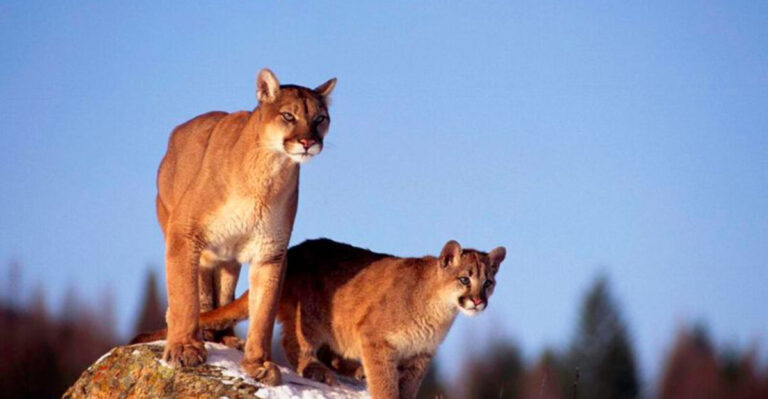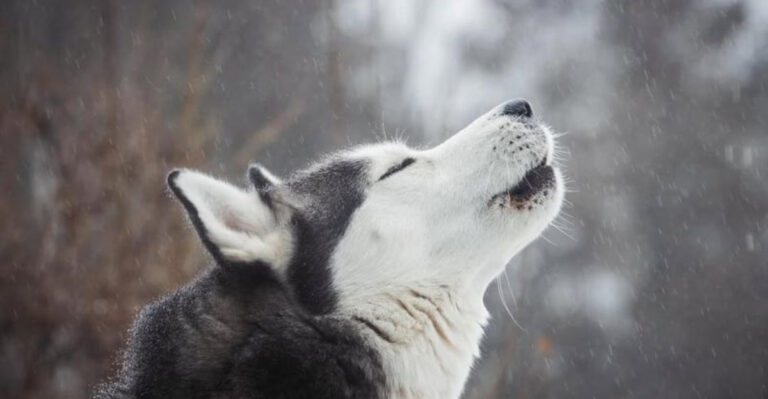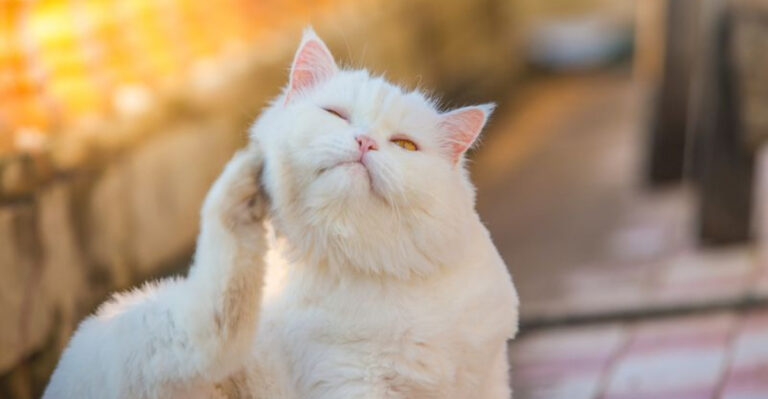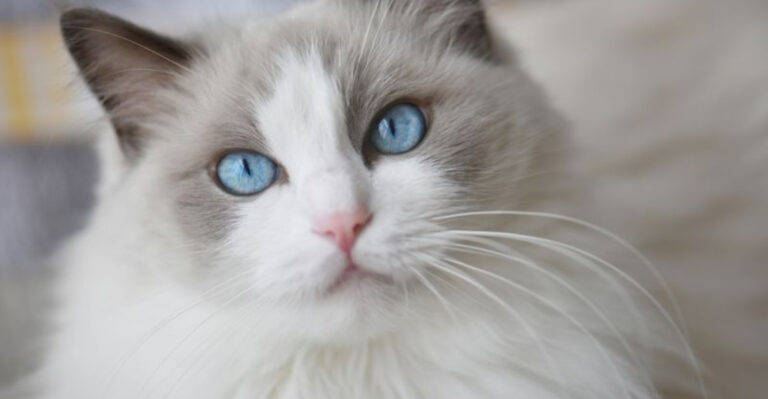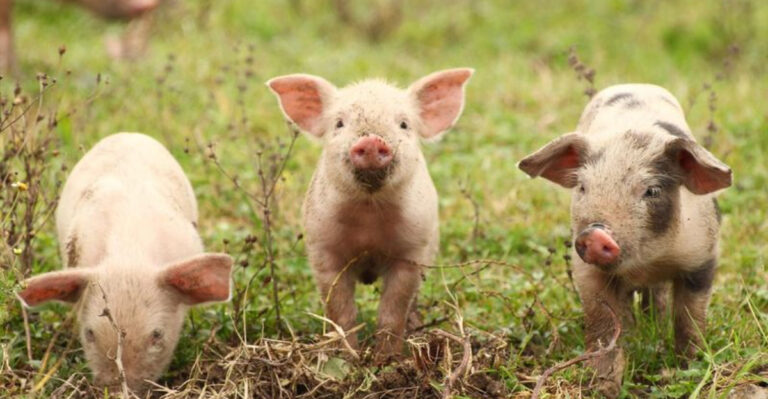These Are The 17 Smallest Birds Ever Spotted In The U.S.
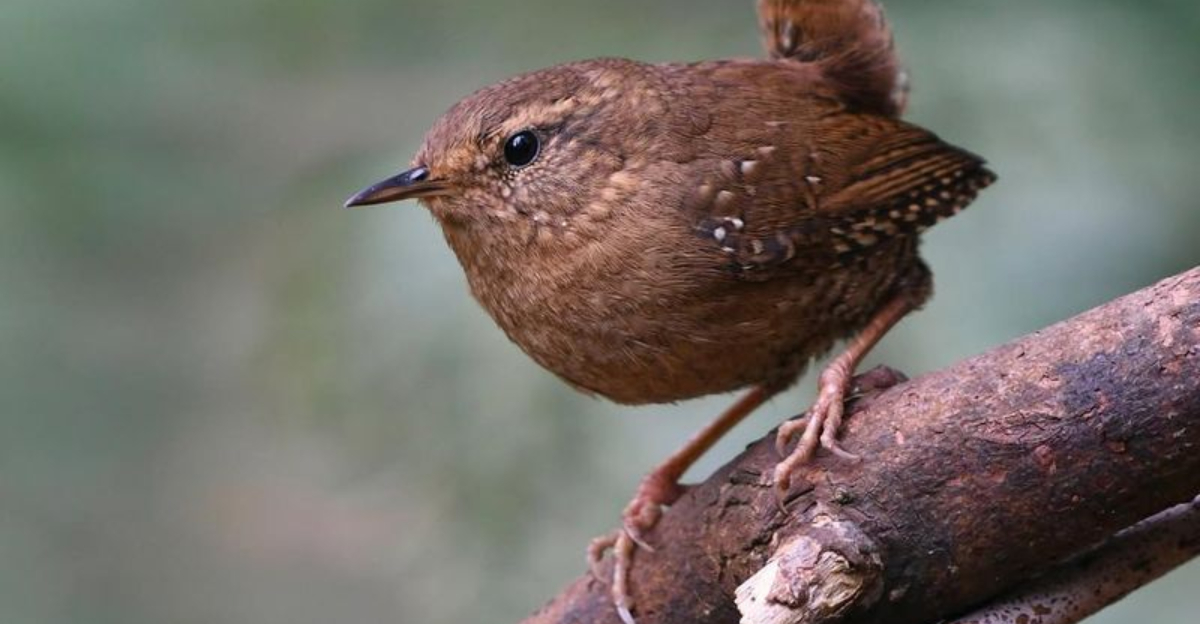
The avian world is full of surprises, especially when it comes to size. In the vast skies of the United States, some birds are so small that they could easily be mistaken for flying marbles.
These feathered wonders enchant bird enthusiasts and casual observers alike with their petite stature and vibrant personalities. Prepare to be amazed as we flutter through a list of the tiniest birds ever spotted in the U.S., each with its own charm and story.
Whether you’re a seasoned ornithologist or a curious nature lover, these miniature marvels are sure to captivate your imagination.
1. Calliope Hummingbird
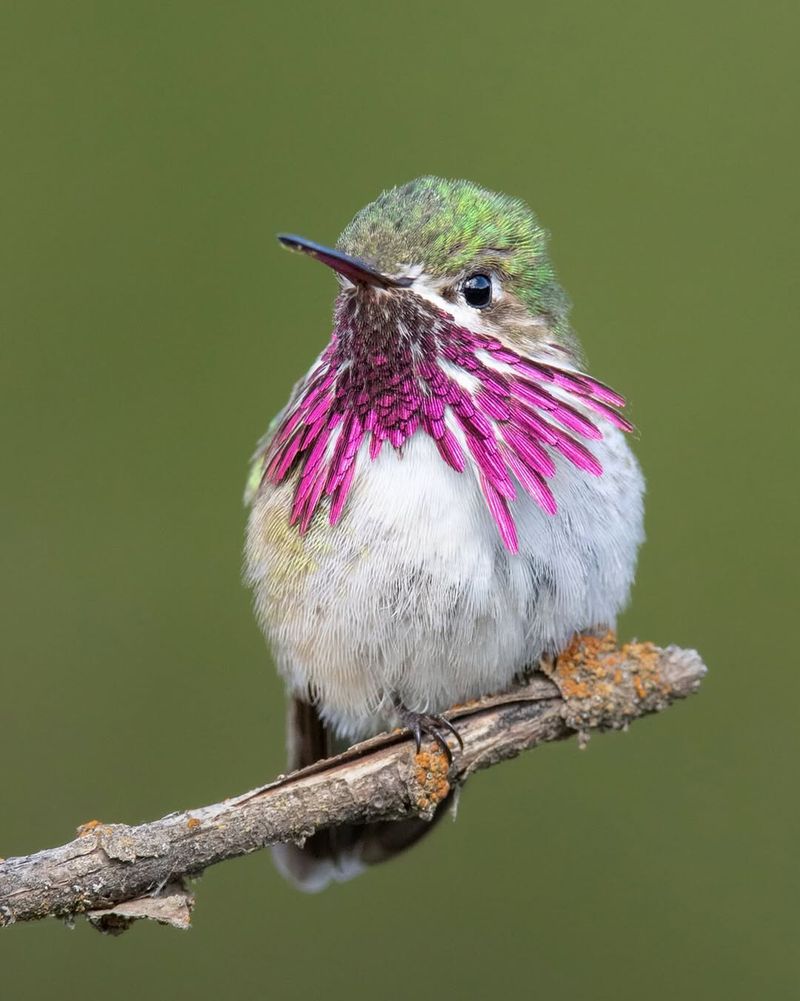
The Calliope Hummingbird might be small, but it certainly has a big personality. Weighing in at just 2.5 grams, this little dynamo is North America’s smallest bird. Its vibrant plumage and dazzling flight are enough to leave anyone in awe.
Unlike its larger relatives, the Calliope Hummingbird measures just about 3 inches in length. Its iridescent feathers catch the sunlight in a way that makes it sparkle like a living jewel. This hummingbird is a master of efficiency, using its tiny wings to migrate thousands of miles each year.
In the battle of the birds, the Calliope Hummingbird may be small, but it is mighty. It bravely guards its territory against much larger birds and has been known to chase off intruders with a ferocity that’s hard to imagine given its size. It’s a tiny titan in the avian world.
2. Verdin
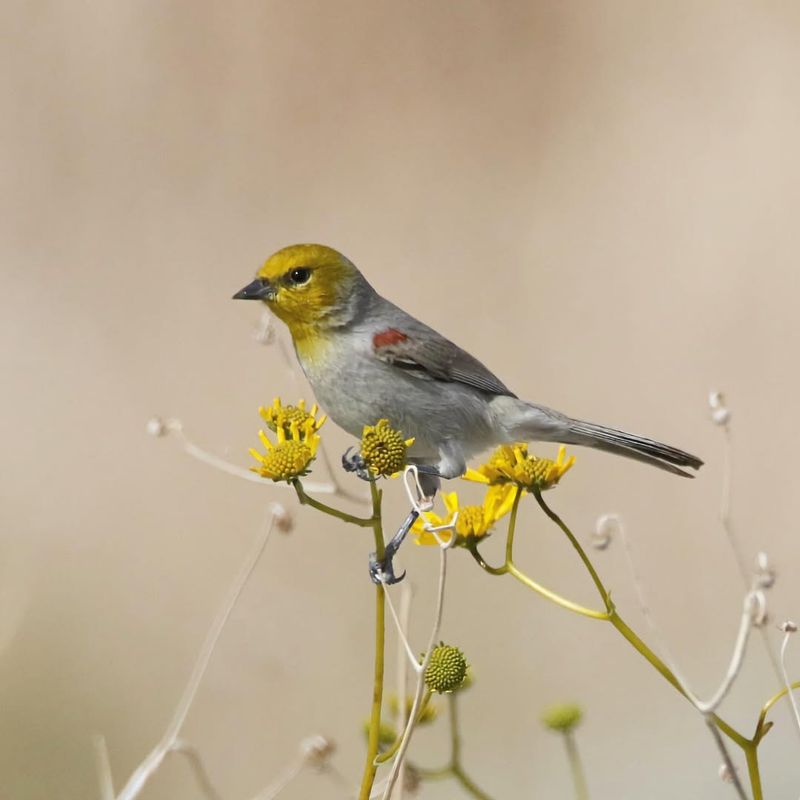
In the wide open desert landscapes of the southwestern U.S., the Verdin stands out with its striking yellow head. At around 4 inches long, this bird is a small but vivid sight. Its ability to thrive in harsh environments is nothing short of remarkable.
The Verdin’s tiny size doesn’t stop it from being a master builder. It constructs elaborate nests that can provide shelter from the scorching desert sun. These spherical nests are architectural wonders in their own right.
Its diet consists mainly of insects and spiders, making it a beneficial resident in its arid habitat. With its charming demeanor and adaptability, the Verdin is a symbol of perseverance and survival in tough conditions. It’s proof that good things come in small packages, especially in nature’s vast palette.
3. Golden-Crowned Kinglet
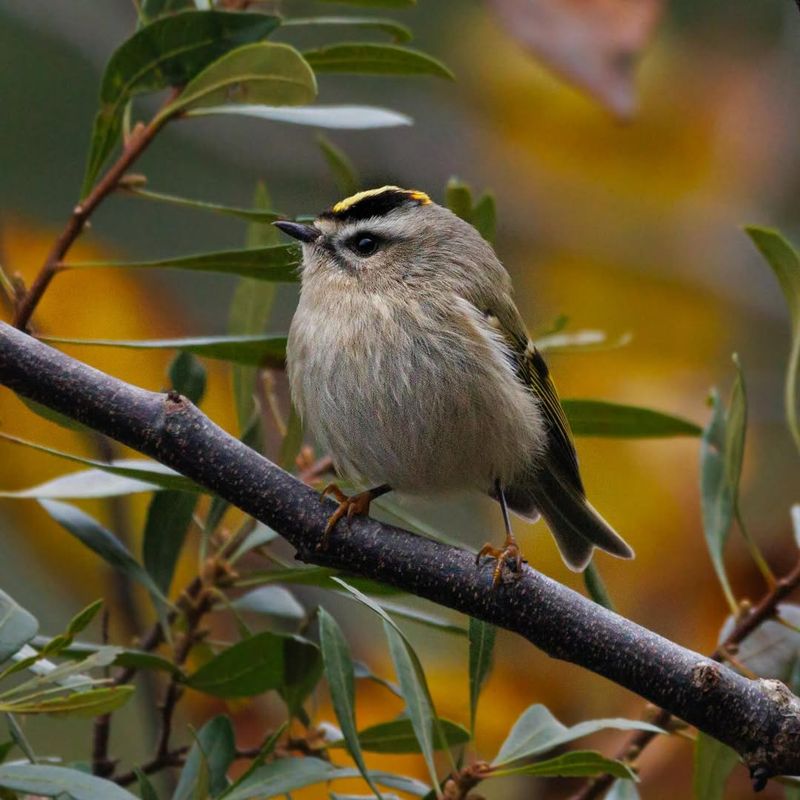
The Golden-crowned Kinglet may be small, but it wears its crown with pride. Measuring about 3.5 to 4 inches, this tiny bird is a regal presence in the forest. Its distinctive golden stripe atop its head makes it easy to spot amidst the foliage.
Despite its diminutive size, the Golden-crowned Kinglet is incredibly hardy. It can survive in frigid temperatures that would send most birds south. Its resilience in cold climates is a testament to its adaptability.
This bird is a lively flier, often seen flitting energetically from branch to branch. Its high-pitched calls are a delightful symphony in the woods. The Golden-crowned Kinglet may be small, but its impact on its environment is as significant as its striking appearance.
4. Bushtit
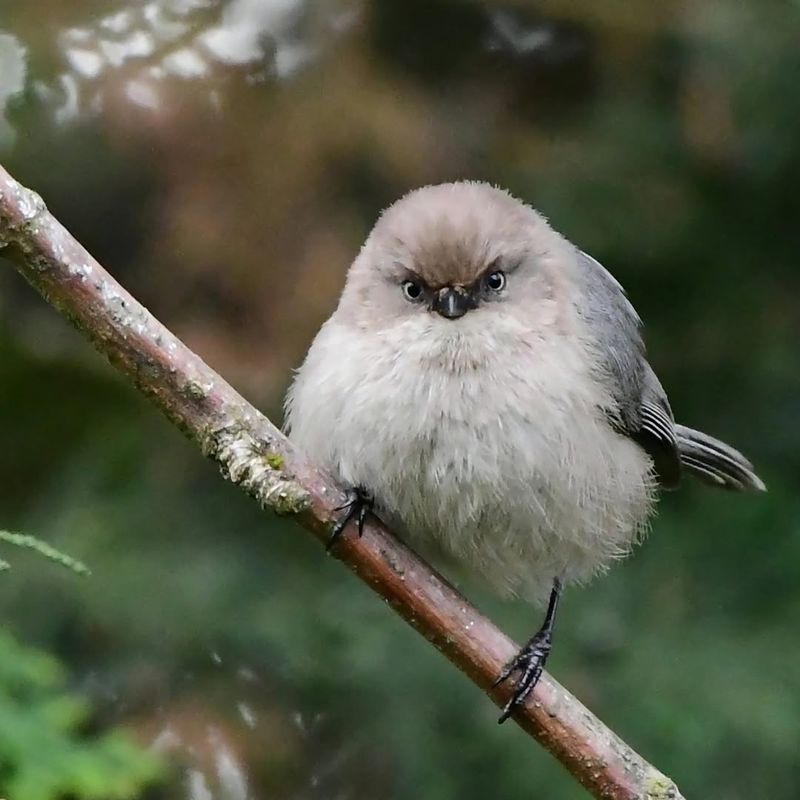
The Bushtit is a bird that thrives on camaraderie and teamwork. At just 3 to 4 inches in length, this social bird is often seen in large flocks flitting through trees and shrubs. Its soft gray feathers and tiny size make it a delightful sight.
Their social nature is apparent in their cooperative nesting habits. Bushtits build hanging nests together, weaving intricate structures that dangle from branches. These communal efforts are key to their survival and success.
Bushtits are an example of the power of community in the animal kingdom. Their friendly chirps and constant movement bring life to any green space they inhabit. In the world of birds, the Bushtit shows that collaboration can lead to great things.
5. American Goldfinch
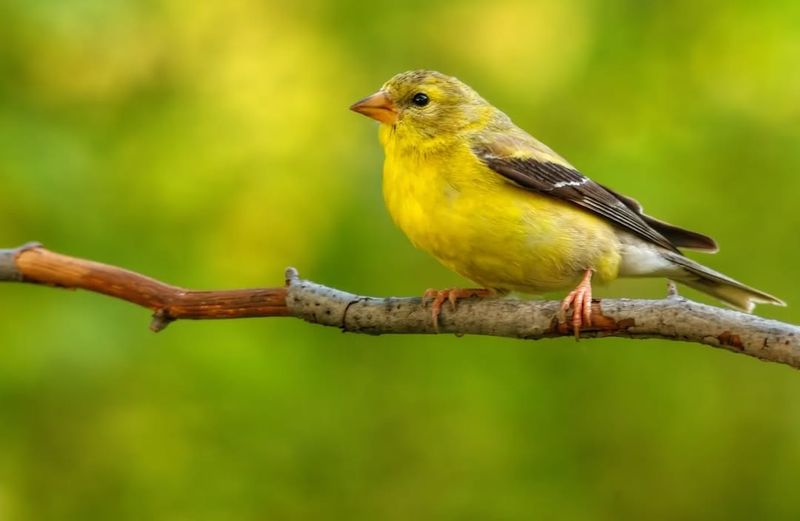
The American Goldfinch is a ray of sunshine among birds. Its bright yellow plumage is a welcome splash of color, especially in the summer months. At around 4.5 inches long, this small bird is hard to miss despite its size.
Known for its acrobatic flight and cheerful song, the Goldfinch is a favorite among bird watchers. Its diet mainly consists of seeds, and it has a particular fondness for thistle, which it deftly navigates in search of food.
The American Goldfinch is a late breeder, often waiting until midsummer to nest. This timing ensures that their favorite food sources are in abundant supply. Their bright color and lively behavior make them a joy to observe, symbolizing hope and happiness in the avian world.
6. Ruby-Crowned Kinglet
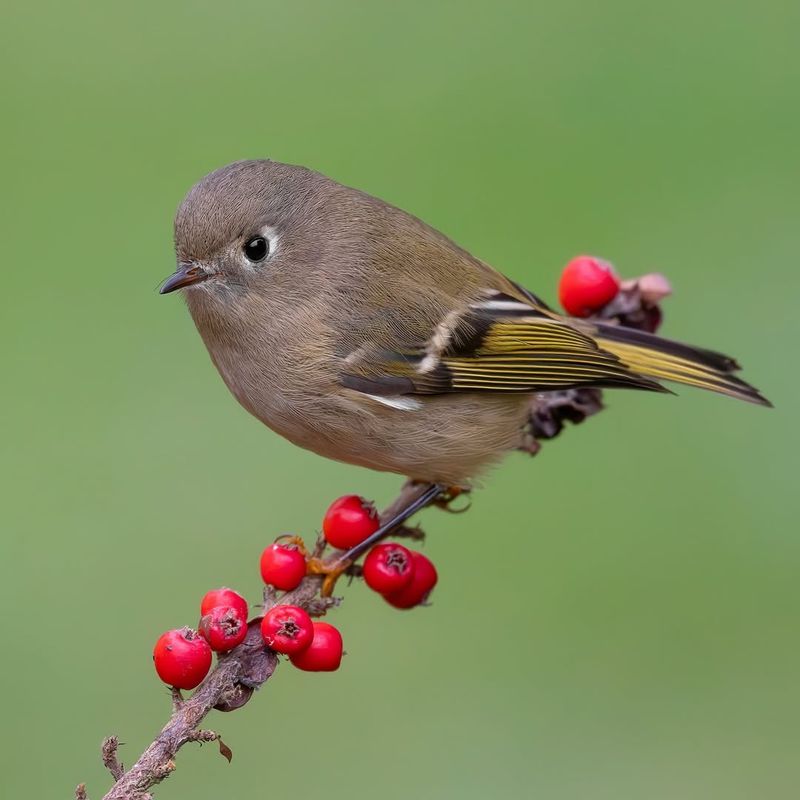
With a crown as vibrant as its name suggests, the Ruby-crowned Kinglet is a delightful sight. This tiny bird, measuring just 3.5 to 4 inches, is often heard before it’s seen, thanks to its fast-paced, melodic song.
The Ruby-crowned Kinglet is not only a visual treat but also a master of agility. Its rapid movements and frequent wing flicks make it a challenging subject for photographers and bird watchers alike.
Its red crown, visible only when the bird is agitated, adds a splash of color to its otherwise understated appearance. The Ruby-crowned Kinglet proves that in the world of birds, a splash of color can make all the difference, captivating those fortunate enough to spot it.
7. Black-Capped Chickadee
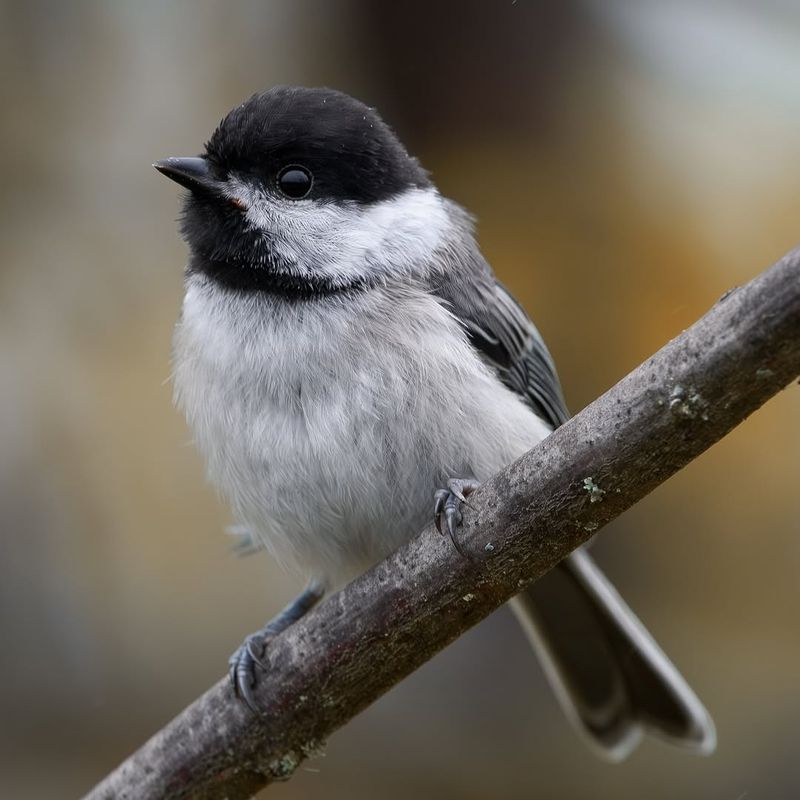
The Black-capped Chickadee is a bird that brings joy in every season. Known for its distinctive black cap and bib, this small bird measures about 4.7 to 5.5 inches in length. Its cheerful call echoes through the forests all year round.
Chickadees are known for their curious and friendly nature. They often approach humans closely, adding a touch of enchantment to any woodland walk. Their ability to adapt to diverse environments makes them a beloved bird across North America.
These birds are also crafty foragers. In winter, they store food in hidden caches, showcasing their remarkable memory skills. The Black-capped Chickadee’s lively presence and endearing behavior make it a favorite among bird enthusiasts.
8. Least Flycatcher
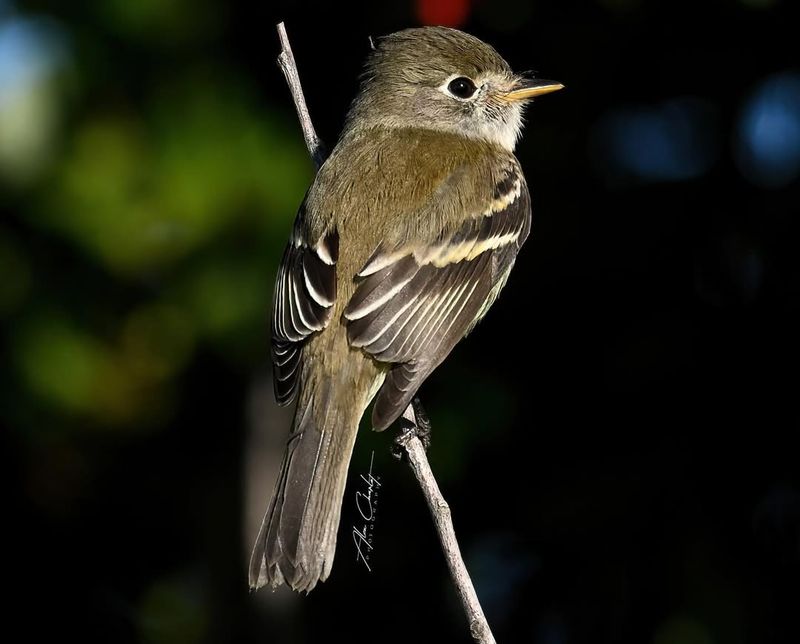
The Least Flycatcher might be small, but it’s a determined little bird. With a length of about 5 inches, it is one of the smallest members of the flycatcher family. Its subtle, olive-gray plumage may not scream “notice me,” but its quick movements certainly do.
This bird is often seen darting through the air, catching insects with precision and flair. Its characteristic “che-bek” call is a familiar sound in deciduous forests and woodlands across the eastern U.S.
Despite its size, the Least Flycatcher is a long-distance migrant, traveling from North America to Central America each year. Its endurance and stamina are impressive feats, proving that size isn’t everything in the world of birds.
9. Canyon Wren
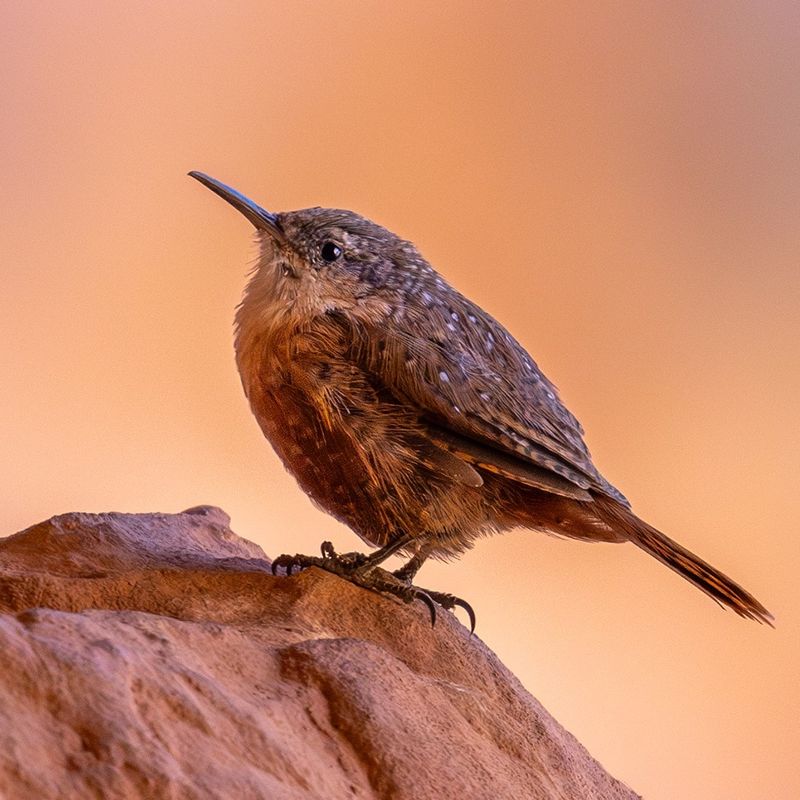
The Canyon Wren is a bird that brings a symphony to the canyons. Measuring about 5.75 to 6 inches in length, its remarkable song echoes off rocky walls as it flits about in its rugged habitat.
With its rust-colored plumage, the Canyon Wren blends beautifully into the rocky landscapes it calls home. It’s a master climber, often seen navigating vertical surfaces with ease and agility.
Its hauntingly beautiful song is a signature of the American West, captivating anyone lucky enough to hear it. The Canyon Wren is a reminder that nature’s music can be found in the most unexpected places.
10. Anna’s Hummingbird
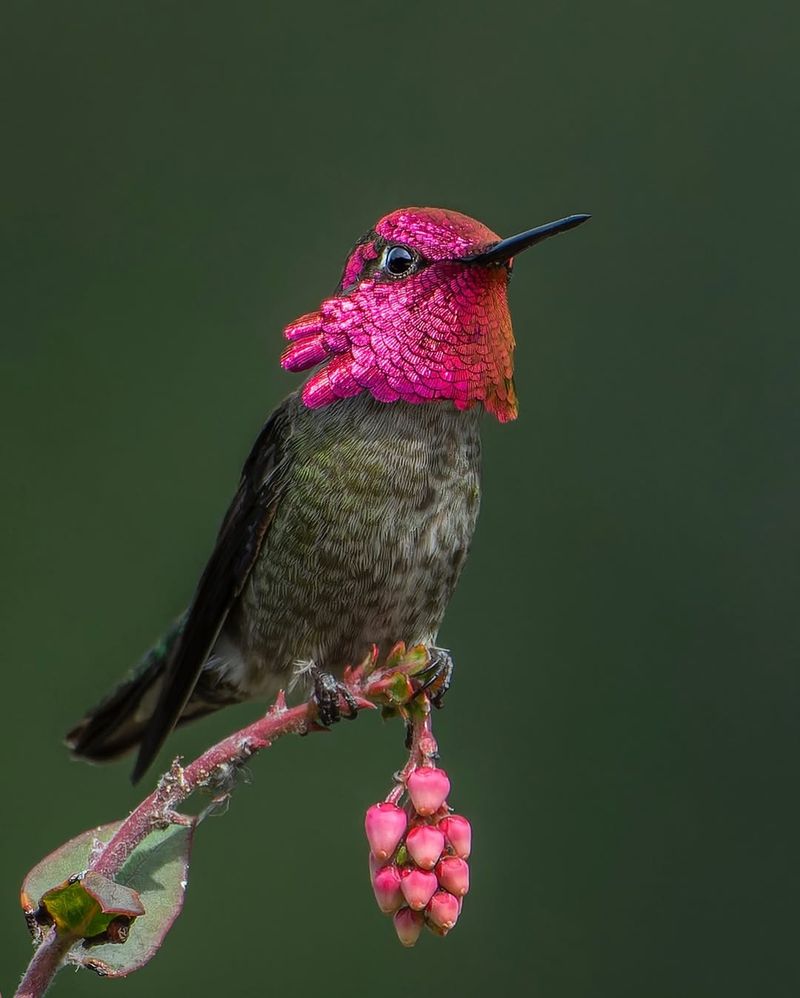
Anna’s Hummingbird is a dazzling spectacle in motion. At about 4 inches long, this tiny bird boasts iridescent green and rose-pink feathers that reflect sunlight in a dazzling display.
Found primarily along the West Coast, Anna’s Hummingbird is one of the few hummingbirds to stay in the U.S. year-round. Its adaptability to urban environments has made it a frequent visitor to gardens and feeders.
These birds are known for their extraordinary aerial displays during courtship, diving and swooping with incredible speed. Anna’s Hummingbird proves that even the smallest creatures can leave a lasting impression, their vibrant colors and dynamic behavior a joy to behold.
11. Blue-Gray Gnatcatcher
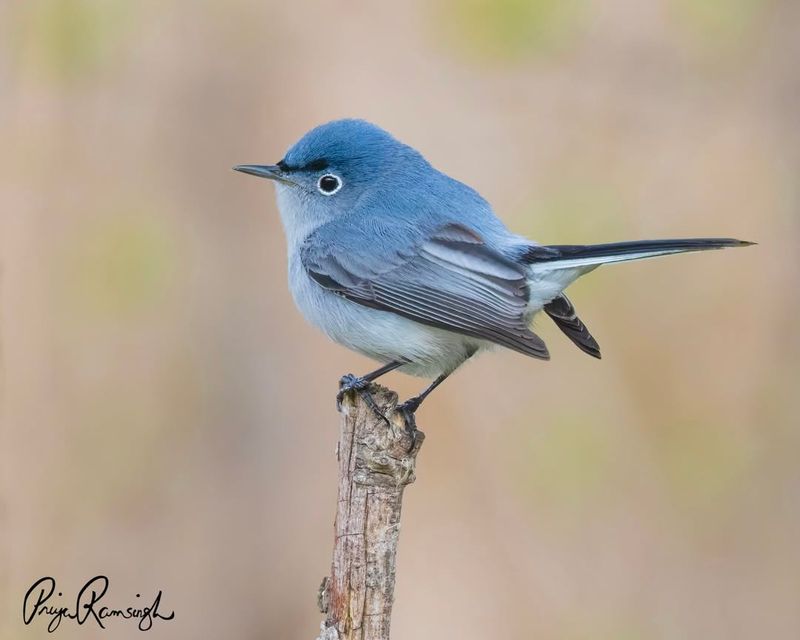
The Blue-gray Gnatcatcher is a tiny bird with a big personality. Measuring around 4 to 5 inches, its long tail and sleek blue-gray feathers make it a distinctive presence in the forest.
This bird is constantly on the move, searching for insects with enthusiastic energy. Its high-pitched calls and rapid movements create a lively spectacle that brings vibrancy to its woodland home.
Gnatcatchers are known for their animated behavior and acrobatic flight. Watching them flit about is a reminder of the dynamic nature of the avian world. The Blue-gray Gnatcatcher might be small, but its lively spirit and striking appearance make it a memorable part of any bird-watching experience.
12. House Wren
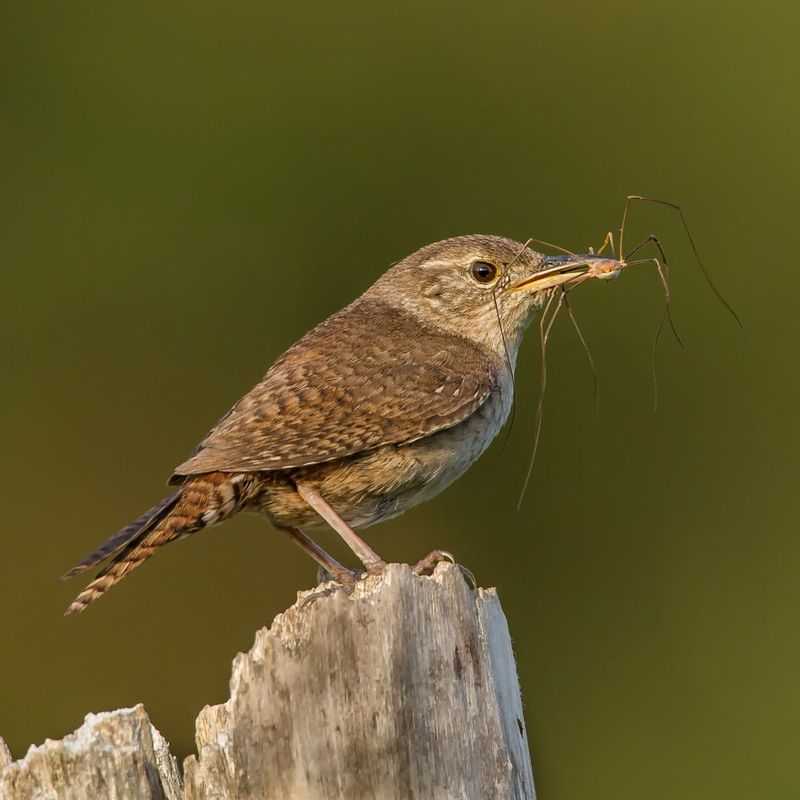
The House Wren is a tiny troubadour that fills the air with music. Measuring around 4.5 inches in length, this small bird is often heard before it’s seen, its cheerful song a constant companion in gardens and backyards.
With its unassuming brown plumage, the House Wren may not stand out visually, but its lively song certainly does. It’s a prolific singer, often perching prominently to deliver its melodic calls.
House Wrens are adaptable and resourceful, using a variety of nesting sites from tree cavities to man-made structures. Their presence brings a sense of joy and whimsy to any outdoor space, proving that the best things often come in small packages.
13. Boreal Chickadee
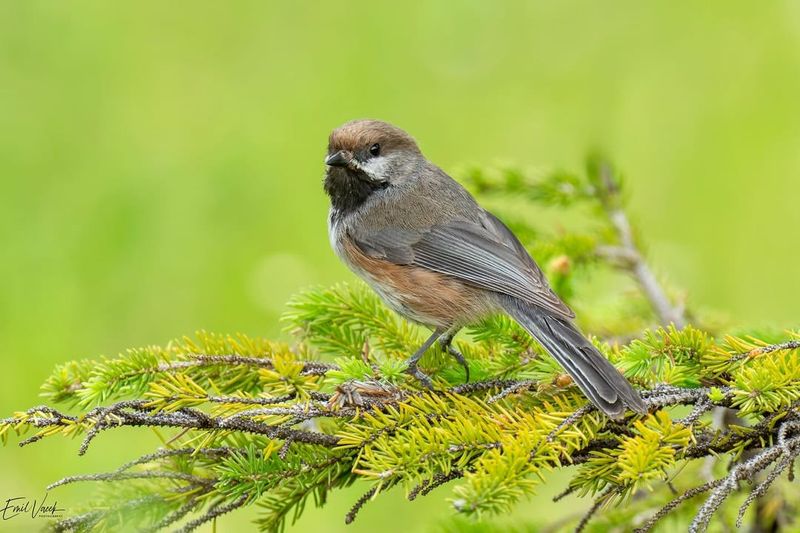
The Boreal Chickadee is a hardy bird of the northern forests. At about 5 inches long, this small bird is well-adapted to the cold, thriving in the boreal forests of Canada and northern U.S.
With its distinctive brown cap and playful nature, the Boreal Chickadee is a delightful sight against a snowy backdrop. Its cheerful call breaks the winter silence, bringing life to the frosty landscape.
These birds are adept at finding food in harsh conditions, caching seeds to see them through the winter months. Their resilience and adaptability make them a cherished presence in their chilly habitats, proving that even the coldest places have their own warmth.
14. Common Yellowthroat
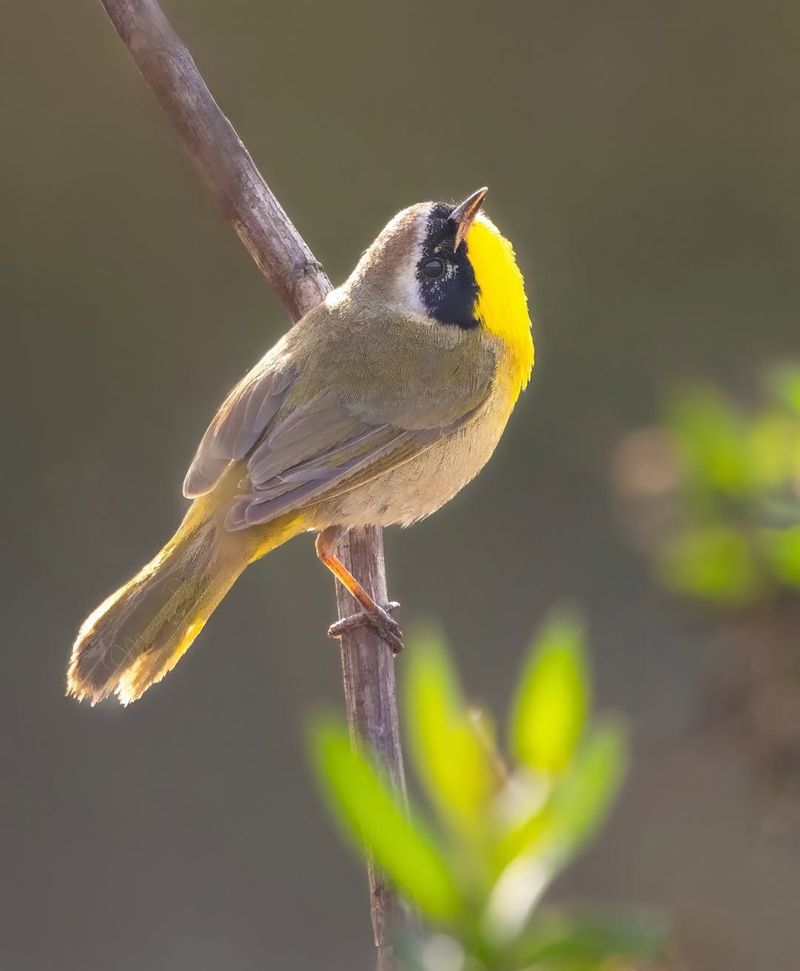
The Common Yellowthroat is a masked bandit of the marshlands. At about 4.3 to 5.1 inches in length, this small songbird is a vibrant splash of color among the reeds.
Male Yellowthroats are easily recognized by their striking black masks and bright yellow bodies. Their lively song is a familiar sound in wetlands, a cheerful reminder of nature’s colorful characters.
These birds are inquisitive and often curious about human visitors. Their playful nature and bright appearance make them a favorite among bird watchers, adding a touch of mystery and excitement to any marshland walk.
15. Pacific Wren
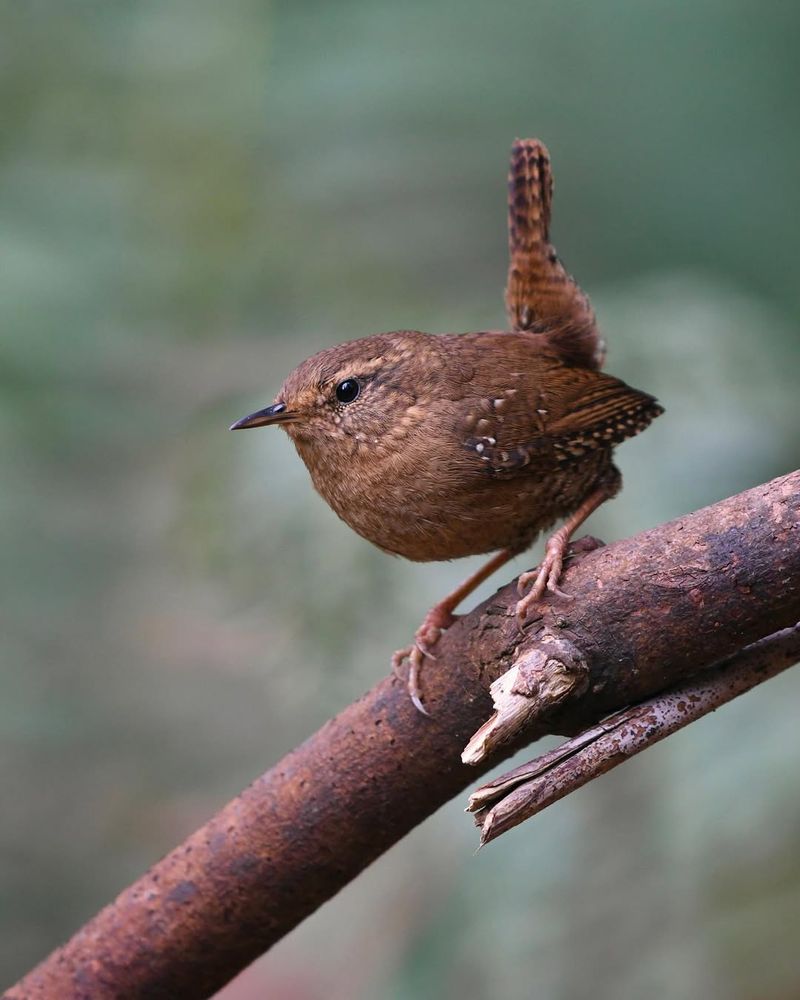
The Pacific Wren is a tiny powerhouse of song. At around 4 inches long, this diminutive bird is known for its complex and lengthy songs that echo through the dense forests of the Pacific Northwest.
With a rich brown speckled plumage, the Pacific Wren blends seamlessly into its forest surroundings. Yet its song cuts through the silence, an intricate melody that captivates those who hear it.
This bird is a master of its woodland realm, often seen flitting through undergrowth with agility and ease. Its presence is a testament to the wonders of the natural world, where even the smallest creatures can make the biggest impact.
16. Allen’s Hummingbird
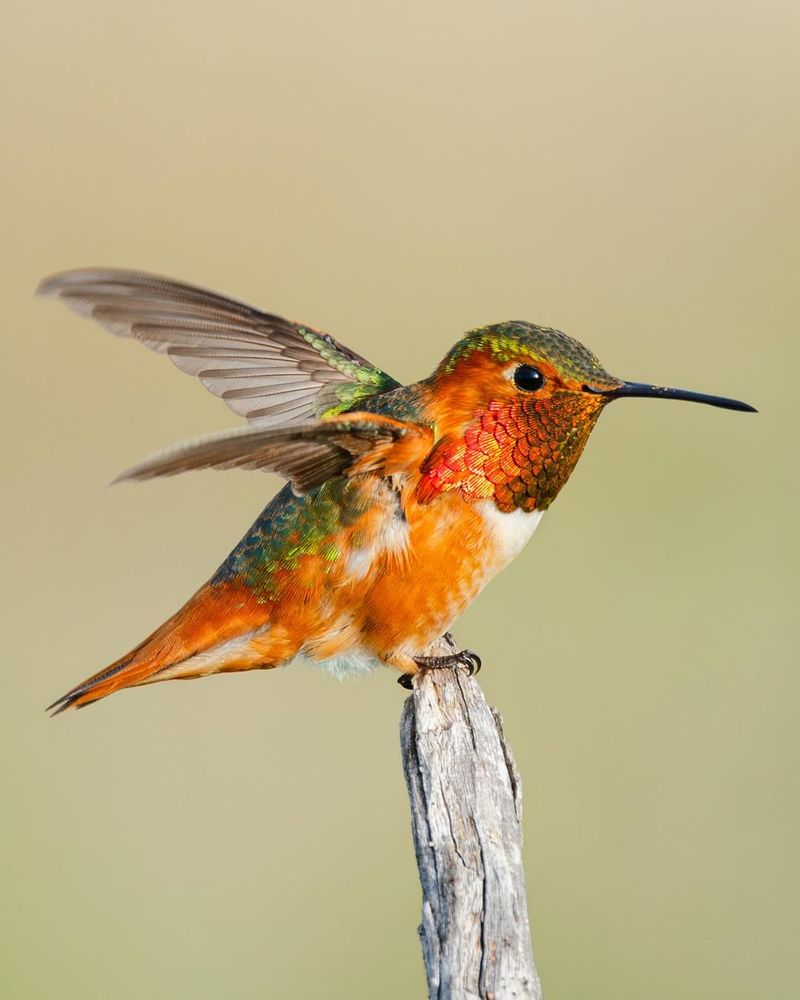
Allen’s Hummingbird is a fiery gem on wings. Measuring around 3 to 4 inches, this tiny bird is known for its brilliant green and orange plumage that catches the sunlight spectacularly.
Primarily found along the coastal areas of California, Allen’s Hummingbird is a frequent visitor to gardens, delighting onlookers with its rapid, darting flight patterns. Its presence is a sure sign of spring’s arrival.
These birds are fiercely territorial, often seen chasing larger birds away from their feeding grounds. Allen’s Hummingbird is proof that in the avian world, courage and boldness often come in small, shimmering packages.
17. Pine Siskin
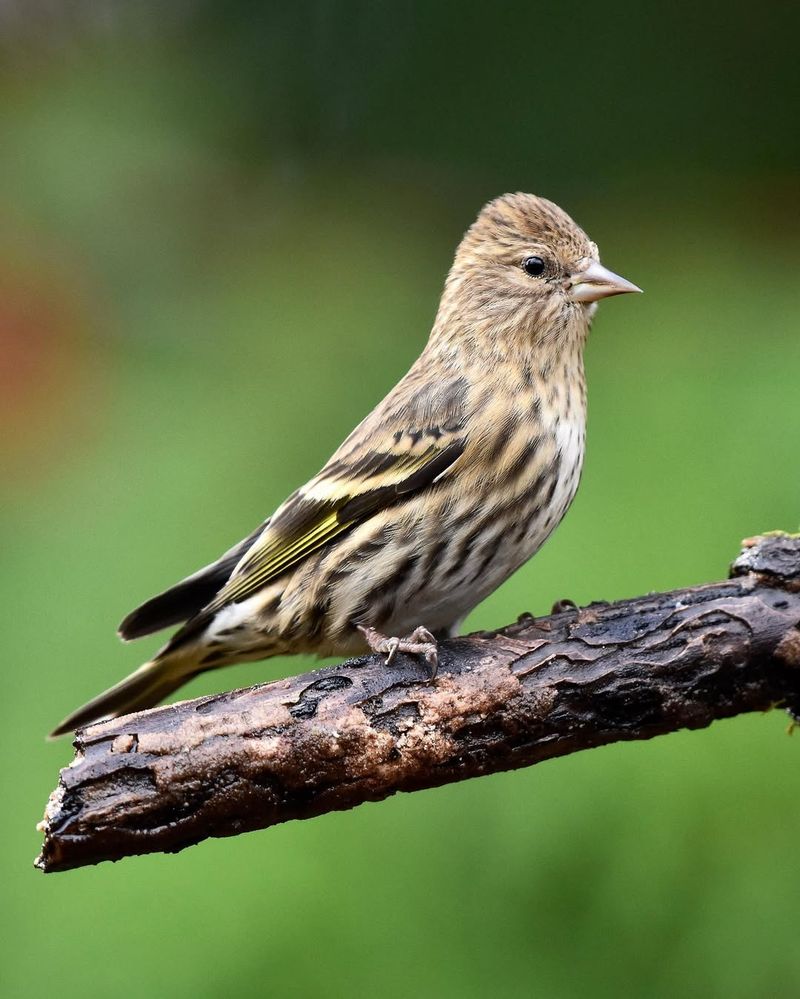
The Pine Siskin is a bird that thrives in colder climates. At about 5 inches in length, this small finch is notable for its streaked brown and buff plumage that provides excellent camouflage against the forest backdrop.
These birds are sociable and often found in flocks, chattering away as they forage for seeds. Their adaptability to different environments makes them a common sight in both coniferous and mixed forests.
In winter, Pine Siskins often flock to bird feeders, bringing a flurry of activity and life to snowy gardens. Their presence is a reminder that even in the coldest months, nature is full of vibrancy and life. The Pine Siskin’s cheerful demeanor and adaptability make it a welcome guest in any winter landscape.


